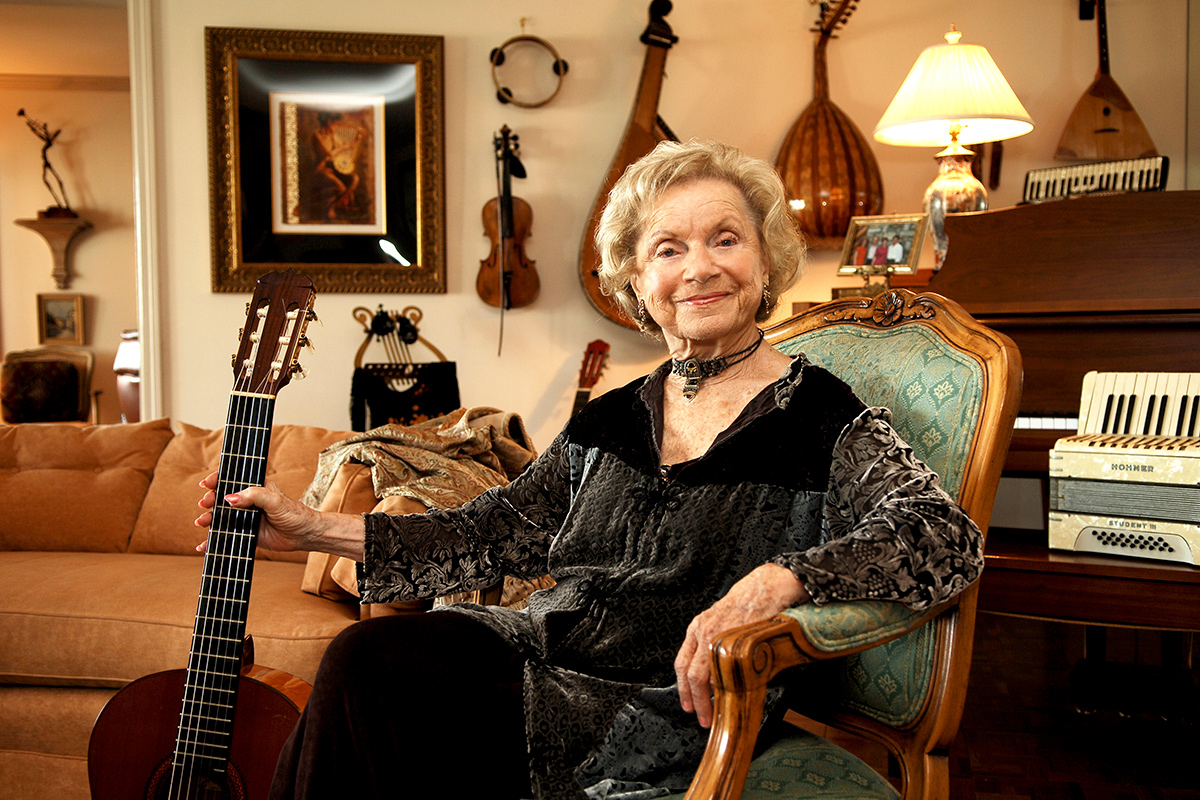In honor of Jewish American Heritage Month in May, we share a short profile of Sephardic musician and composer Flory Jagoda, a resident of Alexandria, Virginia. The story is excerpted from Folk Masters: A Portrait of America by Tom Pich and Barry Bergey, a new book featuring portraits of one hundred recipients of the National Endowment for the Arts National Heritage Fellowships, the highest honor given to folk and traditional artists in the United States.
Born in Sarajevo, Bosnia, Flory Jagoda learned songs from her grandmother, or “Nona” as she calls her, who knew the musical traditions passed down through their Sephardic Jewish family. Sephardic Jews, sometimes referred to as Ladinos, settled in the Balkan region after they were forced into exile from Spain and Portugal in the fifteenth century.
When Flory was seventeen, her father, becoming aware of the impending danger to Jewish residents, told Flory she had to flee. He gave her a forged train ticket, with a non-Jewish name, and her accordion. Flory says that she played the accordion to allay her fears, and the conductor on the train never even asked her for her ticket. Later she was to learn that forty-two of her family members were killed, including her beloved grandmother.
While living in a relocation camp in Italy she met an army officer who she married in 1946 and they moved to northern Virginia. To honor her nona, Flory has made it her life’s mission to preserve the songs, music, and language of her Ladino family.
In her living room, Flory Jagoda is surrounded by instruments connected with her musical heritage. Most important, however, is the accordion resting on the piano bench, for it is the instrument that allowed her to escape from the Holocaust and serves as a material and musical reminder of the family members left behind. In 2014 the Virginia Foundation for the Humanities provided money so that this eighty-year-old accordion that had not been playable for fifty years could again make the music of her youth.
Master accordion repairman Dale Wise delivers the Hohner Student accordion to Sephardic Jewish ballad singer Flory Jagoda on September 21, 2014. Video courtesy of Virginia Folklife Program
Folk Masters: A Portrait of America (Indiana University Press, 2018) features photographs by Tom Pich and text by Barry Bergey, both longtime friends and collaborators of the Center for Folklife and Cultural Heritage.


